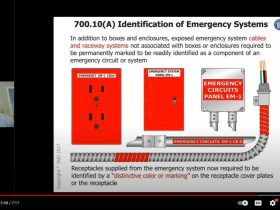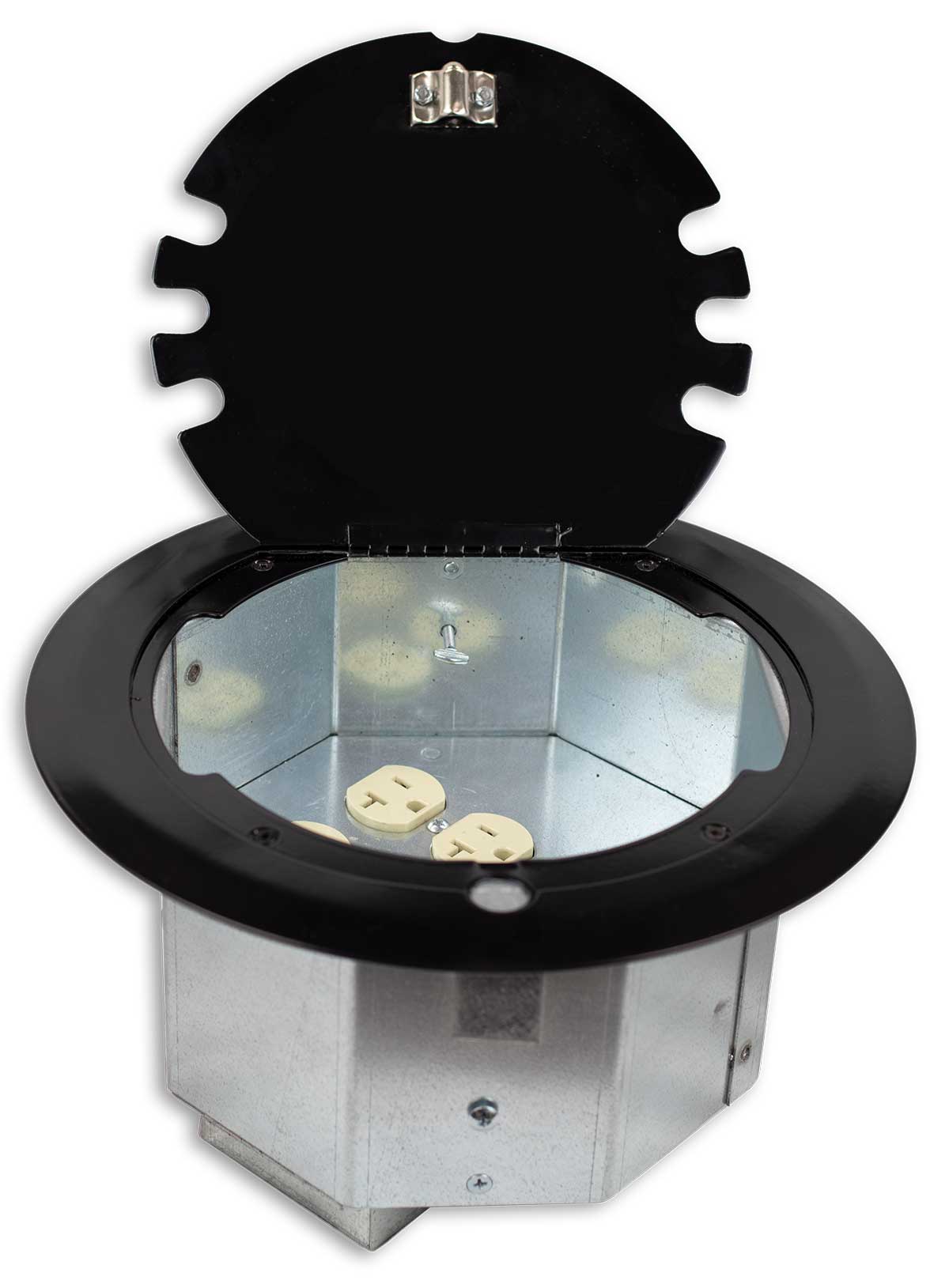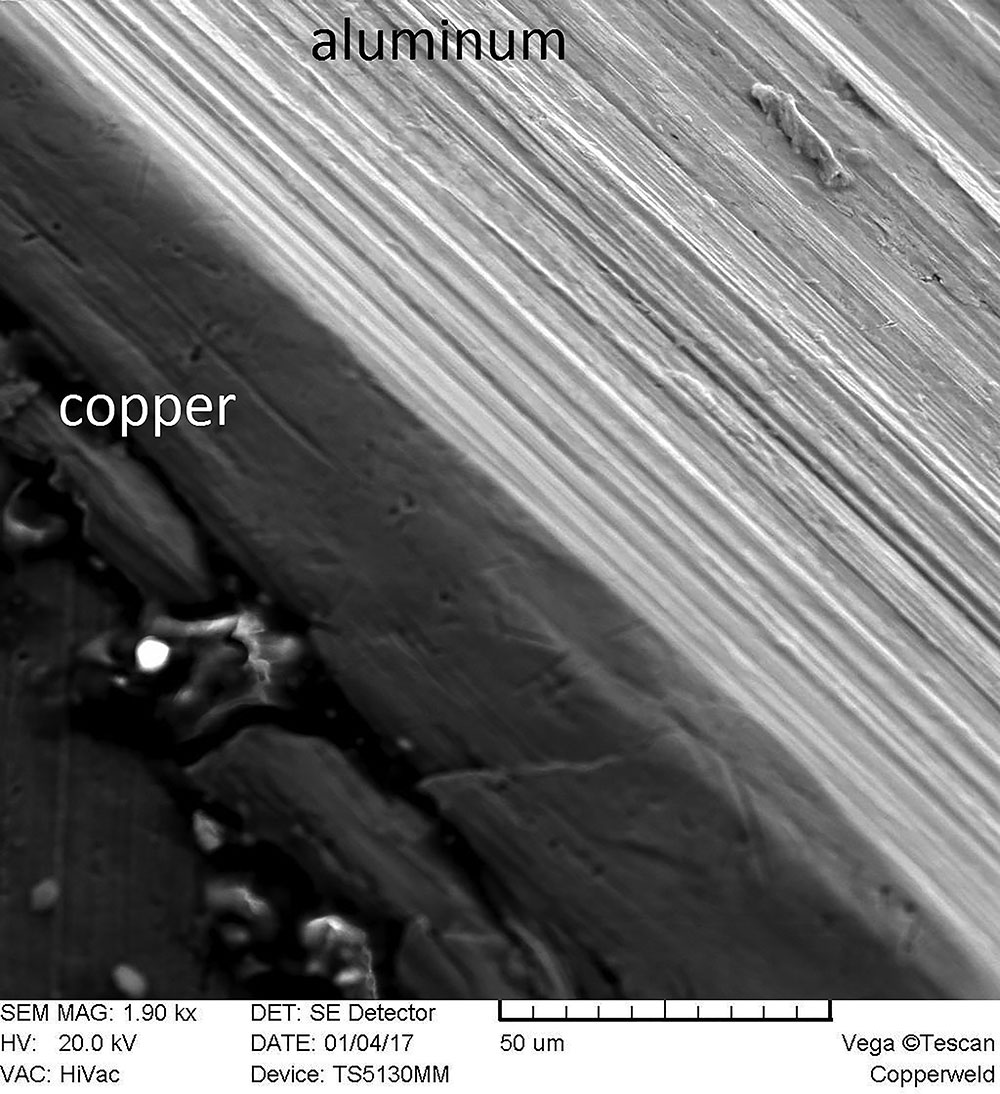This article will discuss Rule 14-100, which specifies the minimum requirements for reductions in wire sizes. Splitter box connections are among the most common applications of Rule 14-100, where conductor sizes are reduced to current ratings below the fuse or circuit-breaker settings protecting the larger conductors.
Rule 14-100 begins by stating the obvious — that all electrical wiring must have overcurrent protection set at a level that prevents load currents higher than their rated ampacities. But the rule also goes on to permit some very well defined exceptions, which will be discussed below.
The first exception is sometimes referred to as the 3-metre rule. This rule specifies that a wire tap may be reduced in size for a length of up to three metres to a switchboard, panelboard or control device such as a switch or circuit-breaker. The installation method may be in conduit, electrical metallic tubing, armoured or metallic-sheathed cable. You will note that the rule says nothing about minimum wire size, only maximum length. You will also note that throughout Rule 14-100, references are made to maximum conductor lengths and not to distances.
The second exception is sometimes referred to as the one-third, 7-1/2-metre rule. To satisfy this part of Rule 14-100, a tap from a larger conductor may be reduced to 1/3 the larger conductor’s ampacity rating and a maximum of 7-1/2 metres in length. Wiring sized and installed in accordance with this rule must have mechanical protection and must terminate at a circuit-breaker or a single set of fuses. You will note that in this instance, the rule calls for both minimum conductor ampacities and maximum length.
The next exception specifies minimum requirements for a single circuit connected to the secondary bushings of a high voltage power transformer and run to either a circuit-breaker or a single set of fuses. The transformer must have primary overcurrent protection as required by the Canadian Electrical Code. The secondary conductors must be protected against mechanical damage. But wait, something is missing! Rule 14-100 does not restrict the maximum length of conductors that may be run throughout a building.
This last exception seems a trifle strange. It is common knowledge that the combination of reduced wire size and higher fault levels increases the risk of electrical fire and shock risk in the event of a conductor short-circuit. We know that Table 50 permits high voltage transformer overcurrent protection up to 600 percent of primary full load amperes. We also know that Rule 26-258(2) permits the secondary connections from a transformer to be a minimum of 125 percent of its secondary full load amperes. The ratio of these protection levels (600/125) is 4.8. In other words, the secondary transformer wiring could be protected at 4.8 times its maximum current rating as permitted by this part of the rule.
Let’s look at a specific example. The code specifies that reduced ampacity wiring from a 200-ampere splitter, supplied by a 75 kVA transformer must be restricted in length to either 3 metres or 7-1/2 metres as discussed above. But at the same time, it permits the supply wiring from the secondary side of a 5 MVA transformer, protected by a circuit-breaker set up to 4.8 times the maximum allowable ampacity of the wiring to be used without any restriction in length. This despite the certain knowledge that larger transformers normally create higher short-circuit fault currents than smaller ones.
Assuming an infinite primary bus, a 5 MVA, 44 kV-600/347-volt transformer with a 5 percent impedance can produce up to a 100,000-ampere fault at its secondary bushings. A 75 kVA, 600-120/208-volt lighting transformer with 5 percent impedance can produce only 4500 amperes. I am confident that all our readers will recognize the increased risks and have the good common sense to avoid applying this part of Rule 14-100!
A further exception is for control wiring, for example, between a motor controller and its pushbutton station. In this case, the control circuit wiring length is unrestricted, but overcurrent protection must not exceed 300 percent of the rated conductor ampacities.
Another exception applies to reduced size wire tap from a larger conductor, both to the primary side of a transformer, and between the transformer secondary and either a circuit-breaker or set of fuses. Actually, this application is a variation of the one-third, 7-1/2 metre rule. Here the minimum tap size to the transformer must be no less than 1/3 the current rating of the larger conductor. The secondary side conductors must not have ampacities lower than the primary wiring multiplied by the primary to secondary turns ratio. And the total lengths of primary plus secondary wiring must not exceed 7-1/2 metres.
As with other code articles, you should always consult the electrical inspection authority for a more precise interpretation of any of the above.










Find Us on Socials